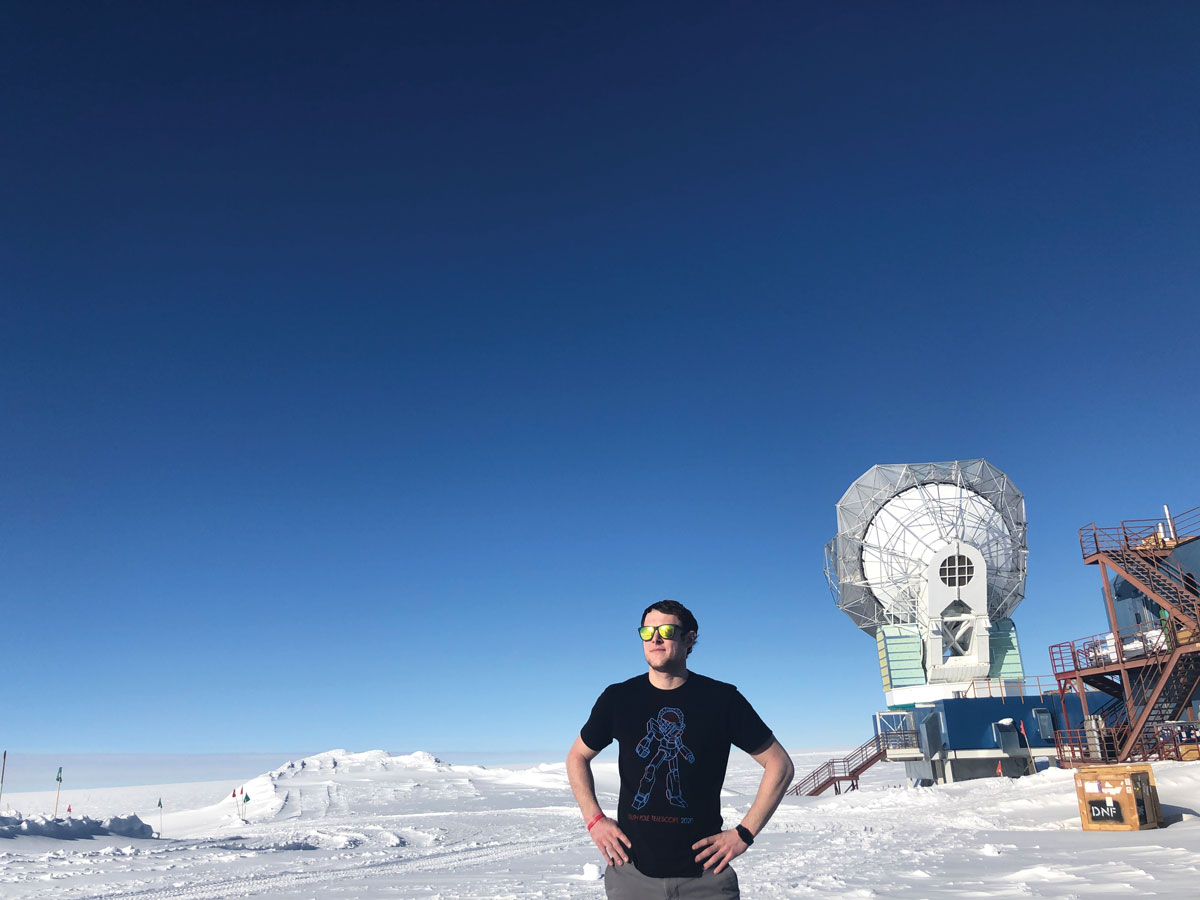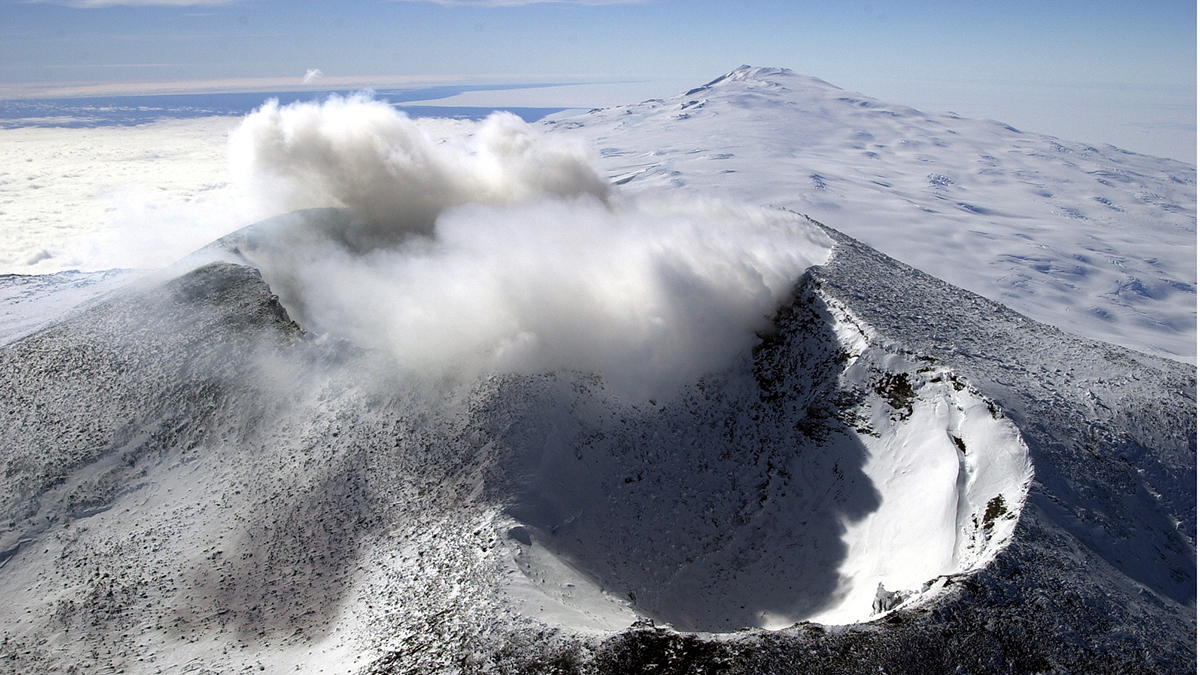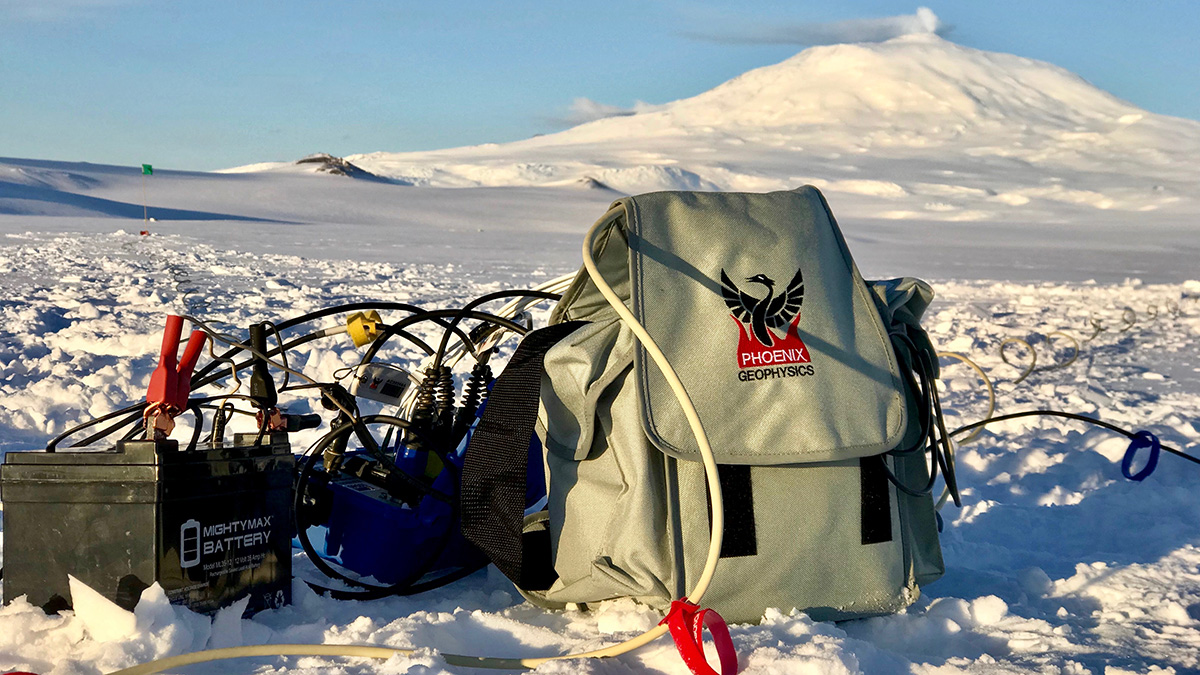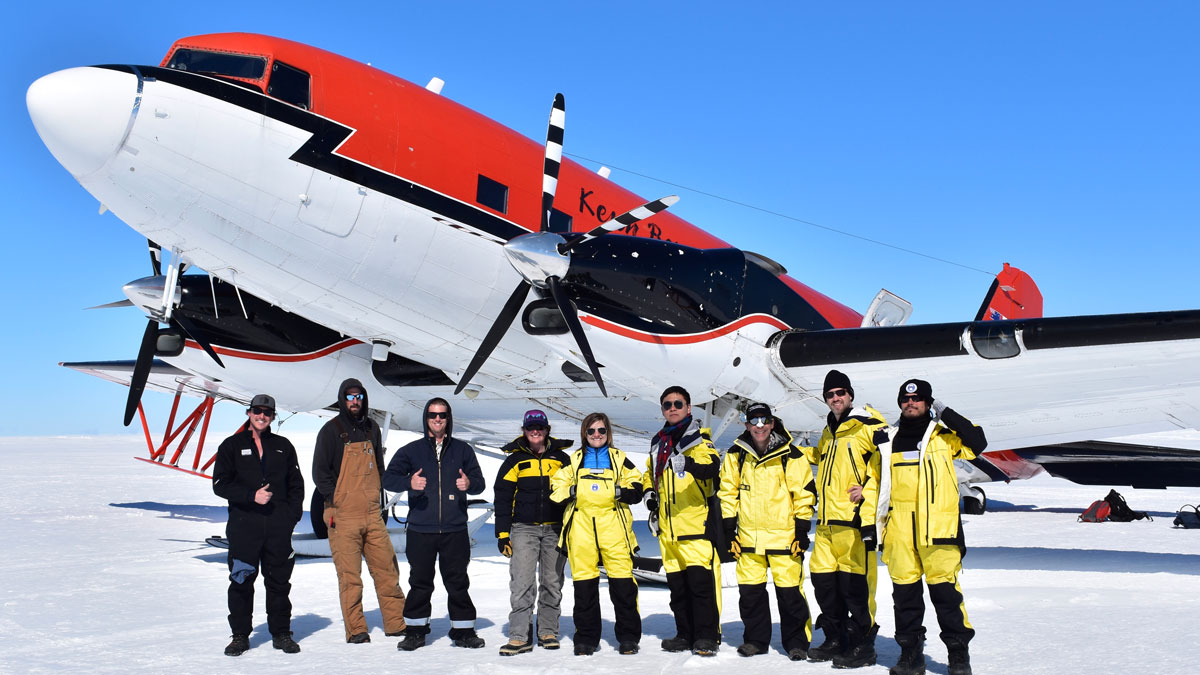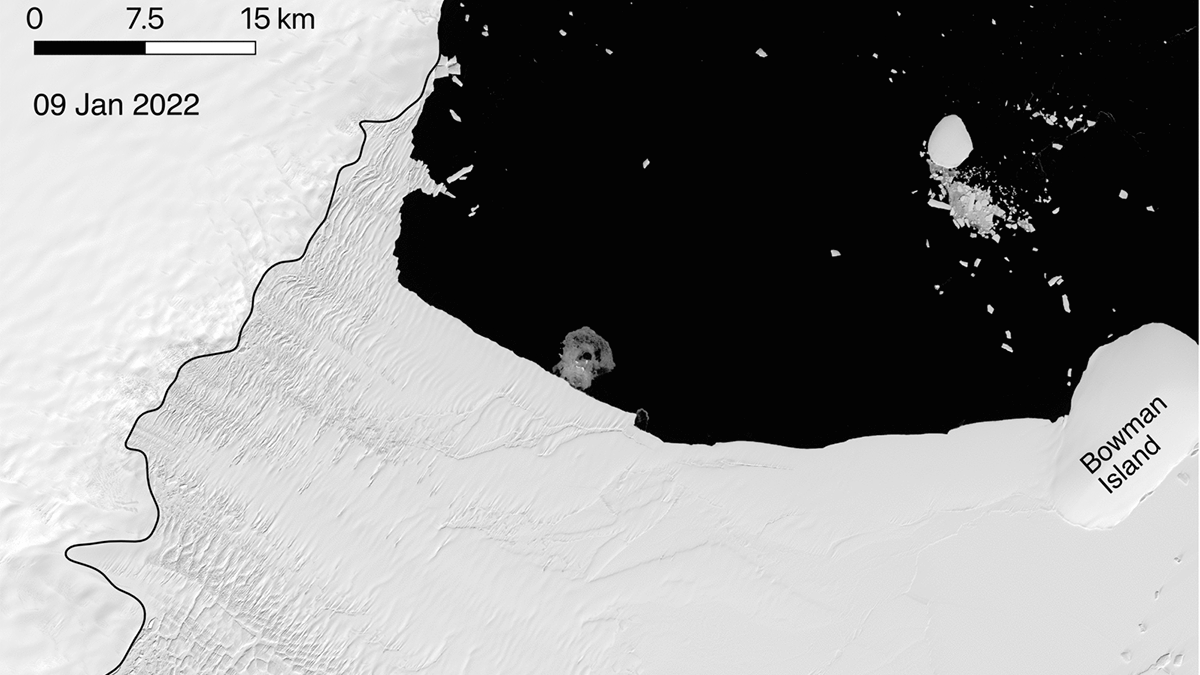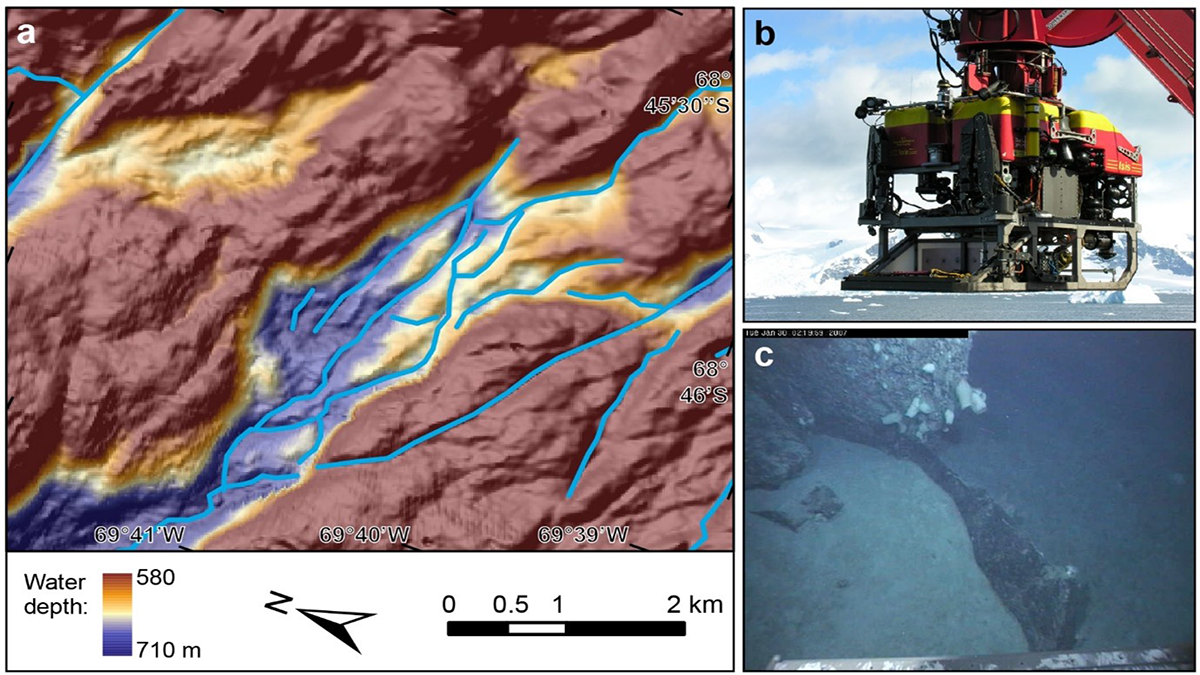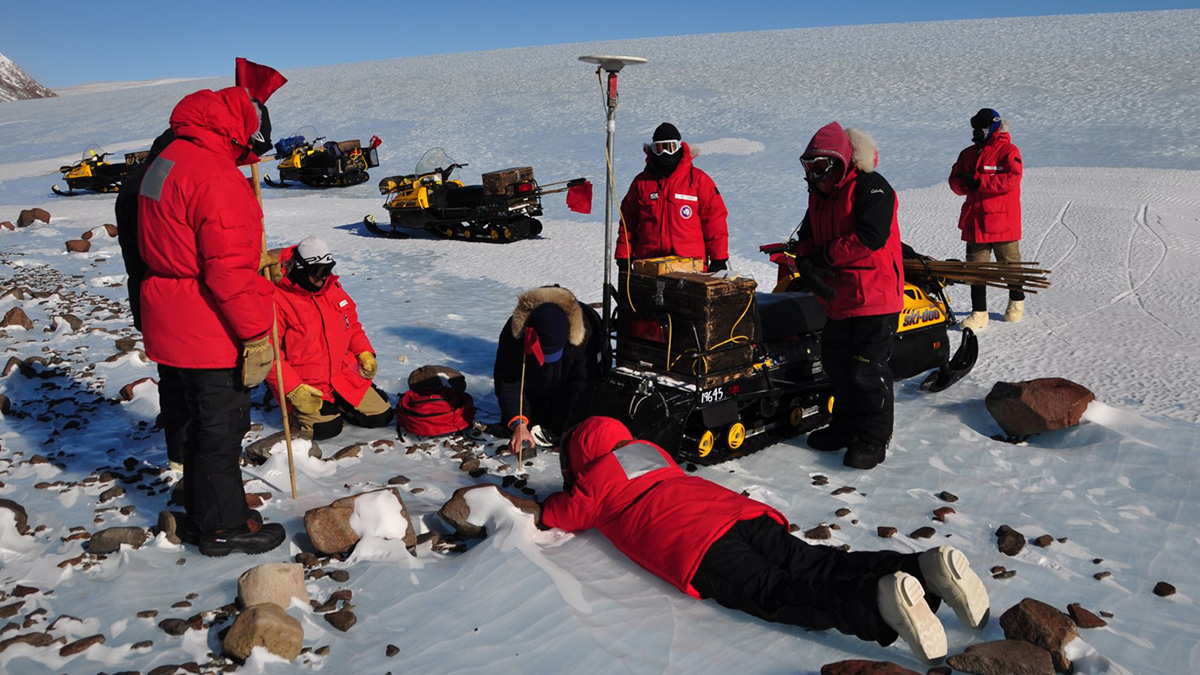While overwintering in Antarctica, Foster maintains the South Pole Telescope facilities.
Antarctica
Unlocking the Magmatic Secrets of Antarctica’s Mount Erebus
Unprecedented images of Mount Erebus’s inner workings show the unique trappings of a CO2-rich rift volcano.
Circling Antarctica to Unveil the Bed Below Its Icy Edge
An international initiative aims to collect a comprehensive airborne data set from the Antarctic Ice Sheet margin to better estimate ice discharge and sea level contributions today and in the future.
Massive Groundwater Systems Lie Beneath Antarctic Ice
Scientists are updating ice stream models to understand the ways in which deep groundwater systems impact ice flow.
Newly Discovered Lake May Offer a Glimpse into Antarctica’s Past
Scientists dive in—metaphorically—to Lake Snow Eagle, only recently revealed through ice-penetrating radar.
Una nueva pista sobre el colapso de la plataforma de hielo antártica
Un tipo particular de tormenta coincidió con 13 de los 21 eventos recientes de desprendimiento en la Antártida.
A New Clue to Antarctic Ice Shelf Collapse
A particular kind of storm coincided with 13 of the 21 recent calving events in Antarctica.
New Observations Reveal Ancient Subglacial Water Paths
Analyses of new shipboard and ROV observations of bedrock channels carved by floods and outbursts from subglacial lakes under Antarctica shed light on complex subglacial processes.
Machine Learning Pinpoints Meteorite-Rich Areas in Antarctica
A new algorithm suggests that only a small fraction of meteorites present on the White Continent’s surface have been recovered to date.
Probing the Mysteries of Deep, Dense Antarctic Seawater
Twelve freely drifting Deep Argo floats reveal year-round dynamics of bottom water flow in the Australian-Antarctic Basin.

